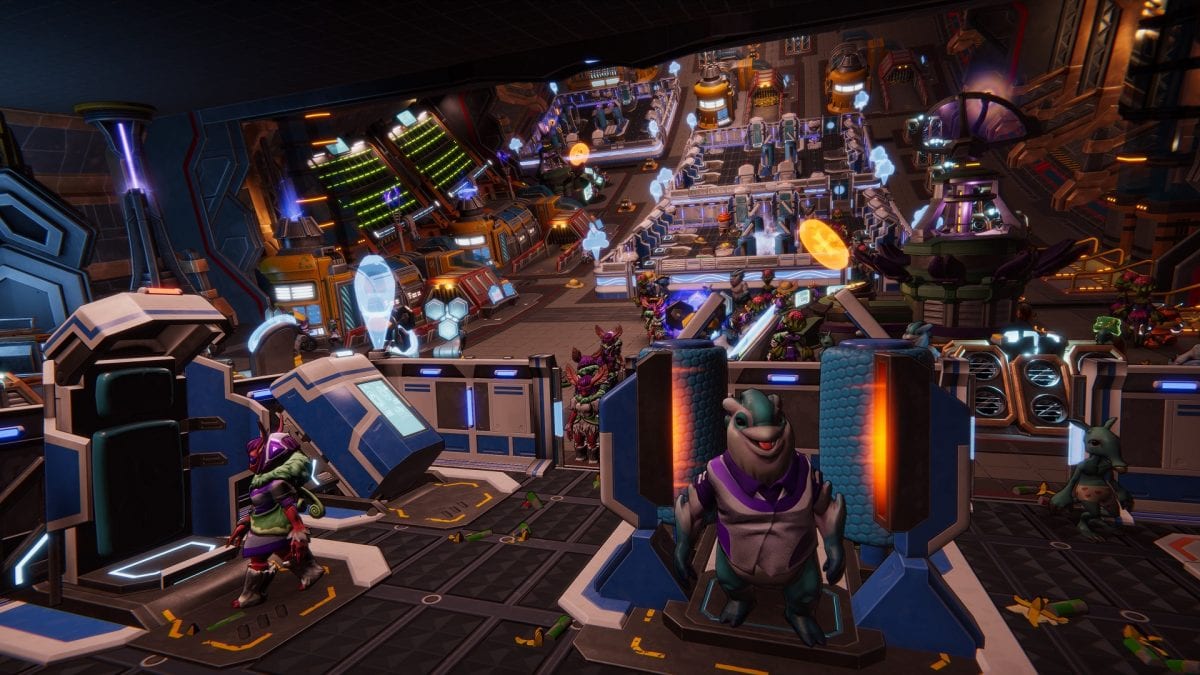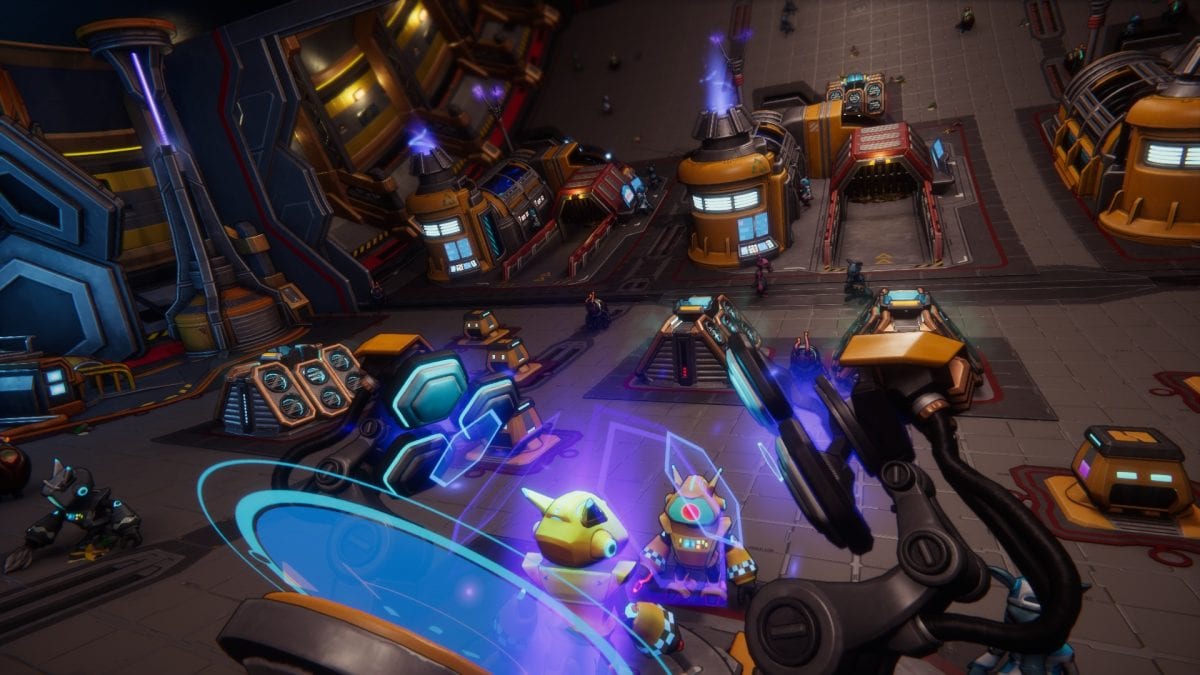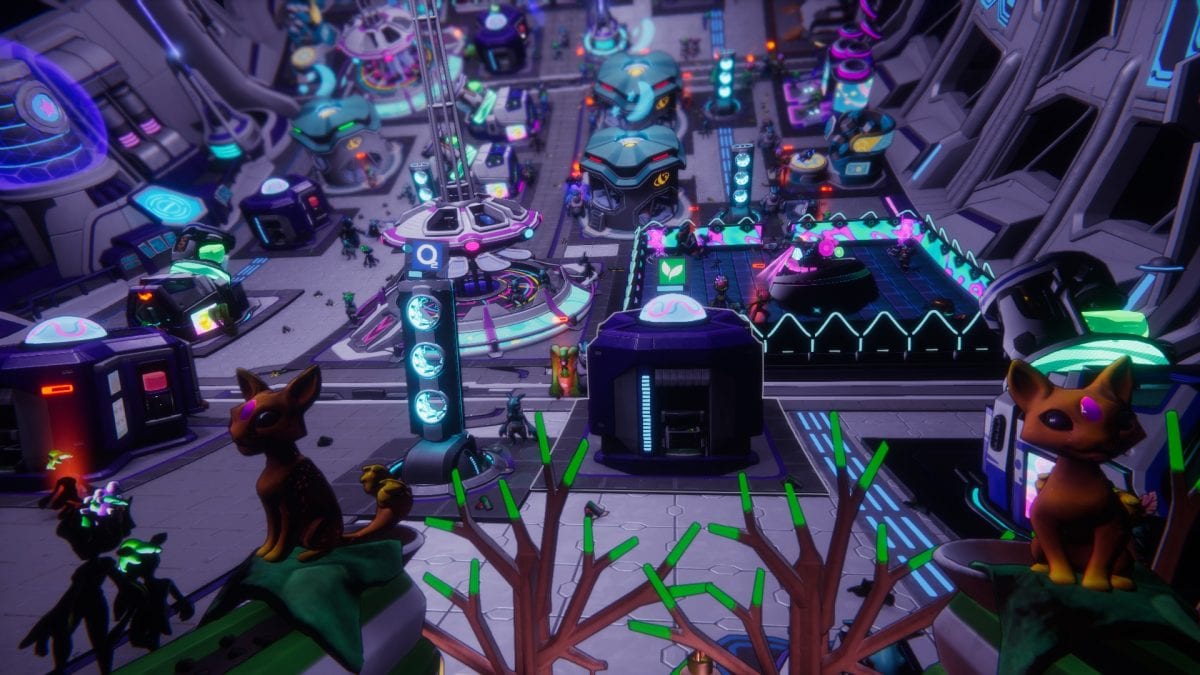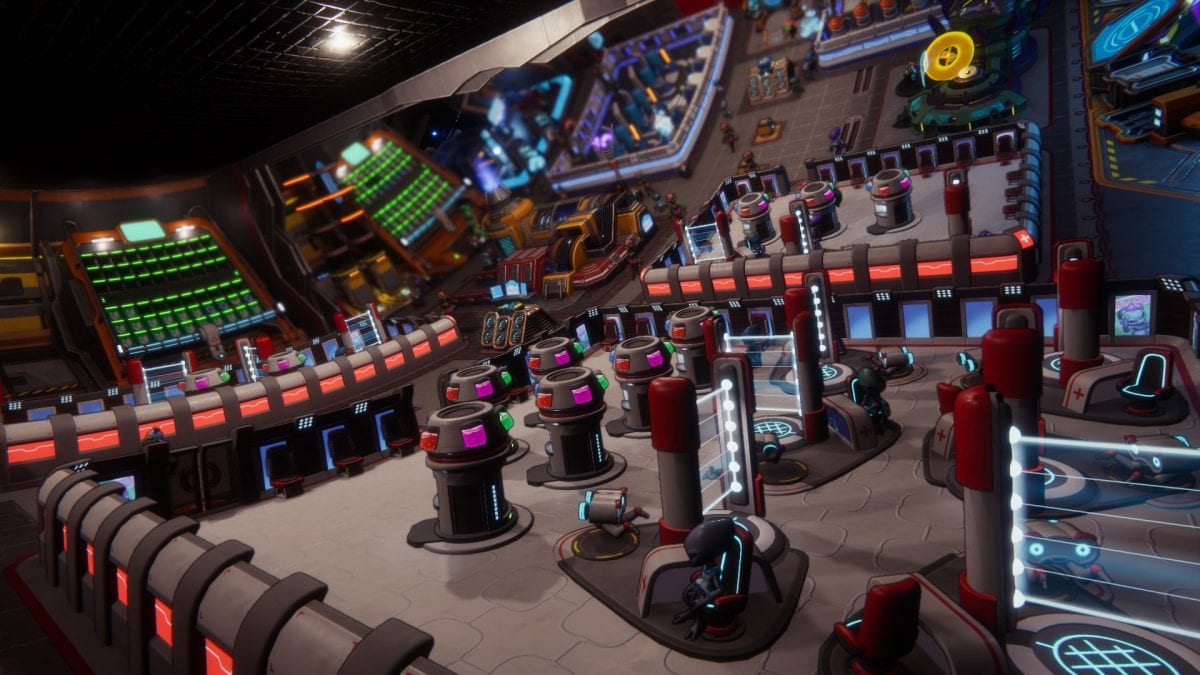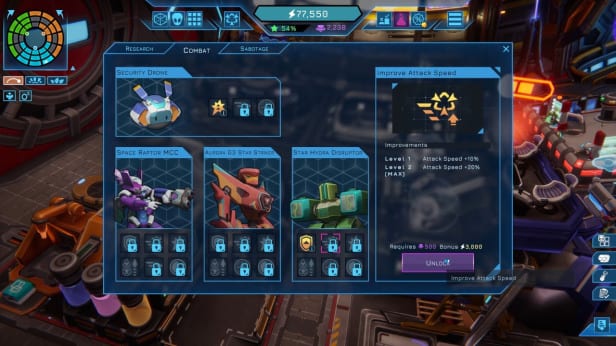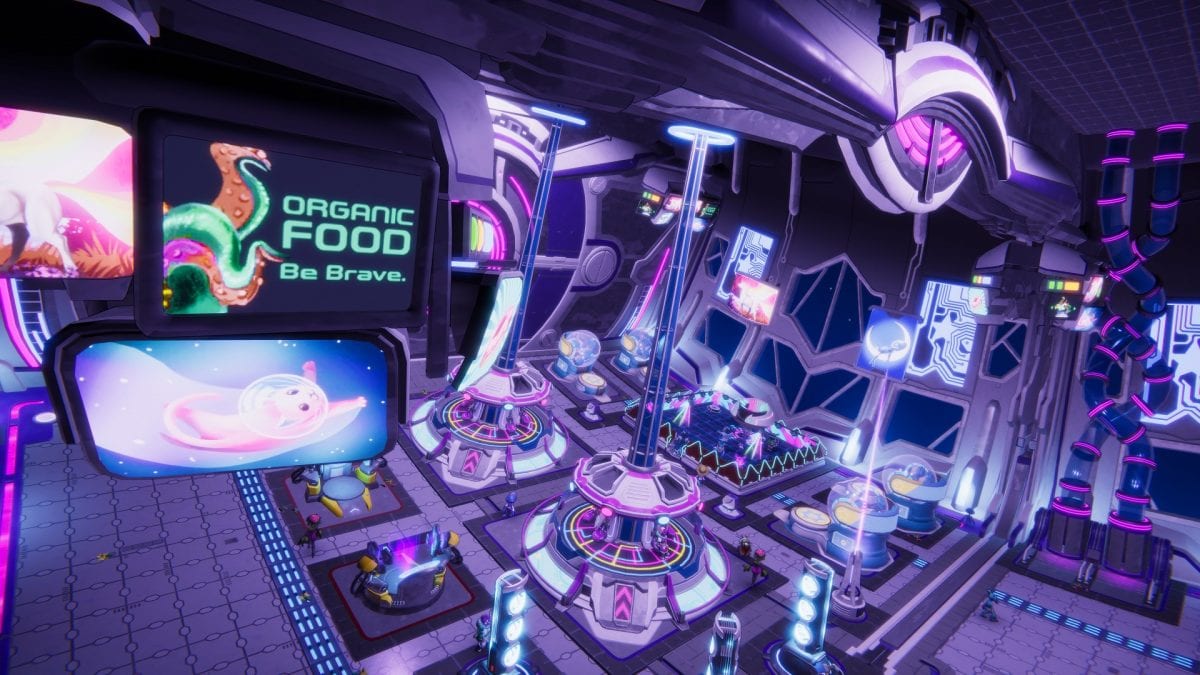The full PC and console launch for Spacebase Startopia is finally upon us, and the new entry to the strategy/sim genre is fun but flawed.
Developer: Realmforge Studios, Kalypso Media
Platforms: Win-PC/Mac/Linux, Xbox, PlayStation 4|5
Release Date: March 26, 2021
I’ve been looking forward to Spacebase Startopia for a while now. Hell, it was even on my list of most anticipated games for the year. Thankfully, Kalypso was kind enough to let me get my hands on the PlayStation 5 version of the game (it’s also coming to PS4, Xbox Consoles, and PCs). Normally these type of sim/strategy games are best on PCs, but by and large, I’m impressed with how they’ve made the game playable on consoles, while keeping the intricacies of the gameplay intact.
Getting Started
Before I get into all that, however, let’s talk about the basics of the game. It’s fairly simple, you’re now in charge of a prestigious hotel for cultures all across the galaxy, Spacebase Startopia. The previous person in charge was “let go,” as in through the airlock and out into space. VAL, the AI robot who serves as your guide/narrator seems a little too anxious to judge your work. She’s a bit on the murderous side, snarky, and provides quite a bit of humor (though a few missions in and her quips become old).
Suffice it to say, you’ve got some big expectations to fill in your role and your helper doesn’t have the utmost confidence in you. The circular space station is home to three separate decks (yes, they go all around the station):
Sub-Deck – This is the “heart” of the station where people on board can work, sleep, eat, and do all the normal living things one has to do. It’s also where you’ll have to keep an eye on certain functions that monitor power consumption and all that minutia.
Fun-Deck – As the name implies, this is where everyone goes to cut loose. From building out a disco/dance club, to setting up amusement park-esque attractions this is where the party’s at.
Bio-Deck – The uppermost deck is what helps keep the whole thing working. From here, you can build out an indoor space that looks like the world of your choice. You can create lakes, hills, trees, etc to not only look cool, but provide natural resources you can use throughout the game.
In order to complete tasks and keep your passengers happy, you’ll have to balance your time between all three of these decks. When you’re just getting started, moving around the station can feel a bit confusing. Since you’re going up and down between the decks, each of which can be extended (by unlocking bulkhead doors) to be a full 360 degrees around, things can get disorienting.
Thankfully, this is mitigated by a surprisingly great/intuitive camera system. You’ve got full control via “free roaming” but it also adheres to tracks that will help orient you when needed. Again, it still takes a little bit of time to get used to but isn’t as unwieldly as I feared when it started.
Even if you’ve played these type of strategy/sim games before, you’ll definitely want to do the tutorial missions first. They aren’t terribly long, but are super helpful. When you fire things up, you’re almost immediately inundated with a plethora of menus to sift through. There’s an overwhelming amount of information all at once and cycling through it all can feel daunting.
The tutorials help parse through the noise and get you more familiar with the basics of playing. Some of the elements (like the social media ticker that lets you know your reputation among the aliens and problems they want fixed) are given only the barest of introductions, but once you have a grasp of the basics, it’s easier to pick up the other stuff while playing. In this way, it feels a tad more accessible to new players to the genre even if it feels overwhelming to glance at all the menus as you go.
More importantly, the tutorial helps you get familiar with the controls (especially if you’re playing on a console like me). Overall, I’m fairly impressed with how they managed to map the controls for the many, many menus you’ll have to constantly swap between. Not all of it feels intuitive, however, and I found myself hitting the wrong buttons to frustration on more than one occasion.
For example, SOME tasks can be executed by using the ‘X’ button (I’m on PS5, remember), but there were other tasks where I had to hit ‘Square’ instead. Little things like this can be confusing, especially when a crisis breaks out on the station and you’re having to work fast. If I’d skipped the tutorial I would have been hopelessly lost in trying to figure out all the controls. Hell, I still needed a refresher now and again.
Hotel Fun
The game itself follows a pattern that will be instantly familiar to just about anyone who’s played this style of sim game before. You’ll have to maintain the facilities in order to keep all your alien visitors happy, while solving some unique problems along the way. Each mission brings its own win conditions you’ll have to work to meet.
On the surface it’s a straightforward “Empire Builder” but it throws in some other quirks that make it feel a bit more unique. It’s not on the same scale as a Civ game, but many of the systems you have to keep up with are the same. You’ll have to keep track of research to improve various things around the hotel, patron needs, gathering resources (your robots won’t be able to handle it all), and even fending off rivals/enemies.
The game boasts a number of alien races, each of which come with their own quirks and needs; with many who fulfill essential jobs your robots can’t handle. The single-player campaign (consisting of 10 missions) will throw a whole bunch of things at you to try and trip you up. Sometimes, upsetting the balance you’ve crafted is as simple as introducing a new species that will force you to change almost everything to account for it.
This adds an element of unpredictability that will keep you on your toes. By the same token, however, it leaves you very little room to actually explore and take time to enjoy your work. There’s no way to pause things, so even as you take some time to enjoy watching the aliens boogie on the dance floor, or play around with terraforming on the Bio-deck, you’re bombarded by issues and responsibilities.
It’s a shame, considering the aliens bring some of the most interesting/fun aspects to your playthrough. Yeah, sometimes they’re annoying, but they can also be humorous to watch as they enjoy the fruits of your labor. Some of them offer unique bonuses if you engage with them, while others are potential saboteurs.
Mixed Combat
Then there’s the combat aspect. Every now and again you’ll have to fend off “invasions” and enter battle. This shifts to an RTS style of gameplay where you’ll have to directly control your battling robots to fend off enemies. As a life-long RTS lover, this was the aspect of the game I was most excited about. Sadly, it’s probably the part of the game that’s weakest.
There’s no real variety in the units you control and it’s just sort of…basic. Pretty much click on your units and point them to the thing you want to kill. That’s it, but you gotta make sure your mechs have room to even GET where you need them to.
A problem I ran into was the layout I’d crafted didn’t work for my bigger attack units to navigate. Perhaps it’s a planning issue on my part, but in the heat of the moment (and the pressing needs of your residents) it can be tough to gauge when you’re setting up new areas. As such, there were times I had to completely re-arrange a room in order to allow for my units to proceed.
In itself, that’s not so bad, but the RTS aspect puts you into a completely different mode of gameplay. So I had to shift to RTS mode to tell my units where to go, then shift back to the standard mode in order to move stuff around. It felt unnecessarily complicated to do something that should be simple and fun. Perhaps that’s something a keyboard and mouse set up would mitigate, but just feels awkward on a controller.
Much To Do
Beyond the single-player campaign that will keep you pretty busy, there is a multiplayer aspect to the game as well. To be honest, I didn’t get to spend much time with it (servers weren’t very populate in my preview time), but it certainly adds quite a bit more bang for your buck.
There’s always plenty to do, and the gameplay itself virtually ensures you’ll never play a mission the same way twice. While constantly dealing with issues can hamper the fun when you’re in the heat of creation, you’ll learn that it’s actually okay to let some things slide and focus on the stuff you’re enjoying most. Plague ravaging your visitors? Well, I’m busy turning the bio deck into a Winter wonderland.
It sounds bad, and can sometimes mess with your win conditions, but I had the most fun when I allowed myself to cut loose and play around. Thankfully, the game doesn’t punish you too much for doing so (aside from having to listen to VAL berate you).

